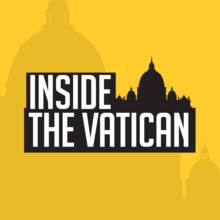Last week, Archbishop Carlo Maria Viganò was back in the spotlight after President Donald Trump tweeted promoting an open letter that Viganò had written to him. The letter praised Mr. Trump for “defending the right to life” and expressed Archbishop Viganò’s belief in a number of conspiracy theories, including the idea of a “deep state” group undermining the American government and a parallel group within the Catholic church.
Listen and subscribe on Spotify and Apple Podcasts.
Archbishop Viganò has published many such letters since his original 11-page “testimony,” published in 2018, accusing a number of top church officials of knowing about abuse by former Cardinal Theodore McCarrick, blaming a “homosexual network” in the Vatican for the abuse crisis, and calling on Pope Francis to resign.
The Vatican has been relatively tight-lipped in response to the archbishop: When journalists asked Pope Francis about the “testimony,” the pope refused to comment beyond saying, “Read that statement attentively and make your own judgment,” adding, “I think the statement speaks for itself, and you have a sufficient journalistic ability to make a conclusion.” Many of the archbishop’s claims have since been called into question, and the Vatican is conducting its own investigation into Mr. McCarrick.
On this episode of “Inside the Vatican,” veteran Vatican reporter Gerard O’Connell and I discuss why the Vatican has remained quiet in response to Archbishop Viganò and whether that is likely to change following President Trump’s endorsement.
We also discuss Pope Francis’ message for the World Day of the Poor, along with the new fund he established with the mayor of Rome and the governor of Lazio to aid workers who had not previously been eligible for government assistance.
Links from the show:
- President Trump tweeted about Archbishop Viganò. So, who is he?
- Archbishop Viganò is aligning with Trump to stay in the spotlight. Pay him no attention.
- From 2018: Cardinal Marc Ouellet responds to Viganò charges, accuses him of blasphemy
- From 2018: It is time for Archbishop Viganò to meet the press
- Pope Francis’ message for the World Day of the Poor amid pandemic: We are all responsible
- Pope Francis sets up new fund for workers left out of coronavirus support










